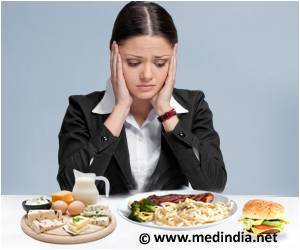
Researchers analyze how personal traits and nudges in food choice design impact acceptance, conducting an online survey across five scenarios and tweaking one design aspect to gauge public response, as published in BMC Public Health (1✔ ✔Trusted Source
Public acceptance of default nudges to promote healthy and sustainable food choices
).
You may not realize it, but “nudge” has been used by businesses, policy-makers, and governments for years to prod the public into making different choices.
#food #health #foodchoice
’
Small changes in our environment can “nudge” us into different behaviors without restricting the options available to us.
For example, printing the low-calorie options in bold on a menu, or showing the calorie information, might change what we choose to eat.
But does the public support this? And how do subtleties in how ‘nudge’ interventions are designed affect support, if at all? Research led by the Universities of Göttingen and Bonn set out to examine public support for nudge scenarios with different design variations, each aimed at promoting healthy and/or sustainable food choices.
The researchers showed there were two promising ways to improve public support for nudging strategies: reducing the effort people must expend to avoid the nudged option they would usually want to follow, and improving the transparency of the nudge.
People can be nudged to make a certain choice by making it the default option. For instance, rather than offering butter automatically at a restaurant by default, restaurants could make it so that butter is only available upon active request.
Advertisement
This type of nudge – known as a “default nudge” – can be effective, but it can be unpopular relative to other nudging strategies.
Researchers set out to analyze consumer reaction by conducting an online survey on a sample (N = 451) of German adults, who were presented with five nudge scenarios and prompted to rate their support for each.
Interplay of Traits and Nudges
Participants were also asked in each scenario to indicate what their typical behavior would be (i.e., would you usually eat butter in a restaurant), the extent to which they perceived the nudge to intrude upon their freedom of choice, and how effective they believed the nudge would be.
Advertisement
Participants then answered the same questions for a variation of each nudge scenario in which one aspect of the design was changed, allowing the researchers to pinpoint how these design variations affected public support.
The researchers discovered that some designs were more promising than others for improving public support.
For instance, reducing the effort needed to opt out of the nudged option – such as by presenting vegetarian dishes on the first pages of a menu followed by meat dishes, rather than providing only a vegetarian menu on the table with a menu with meat options available on request – increased support.
Similarly, increasing the transparency of the nudge itself, such as by asking participants whether they preferred a pre-filled ‘climate-friendly’ online grocery cart rather than simply offering it by default, increased support.
Regarding predicting the level of support, the perception that nudges intruded upon free choice was the most important driver of non-acceptance, whereas the perception of effectiveness was the most salient driver of acceptance.
“Understanding public support – and its drivers – is important for designing politically viable, ethical, and effective nudges,” says first author Simone Wahnschafft at Göttingen University’s Sustainable Food Systems research group.
“We were surprised to find that the personal circumstances of our participants and whether their behavior would be affected by the nudge had little effect on their support. We found that the perception of upholding free choice and of effectiveness was key to public support.”
This study opens up avenues for future research into how ‘sweet spots’ can be found for default nudges that are both effective and widely supported.
Reference:
- Public acceptance of default nudges to promote healthy and sustainable food choices
– (https://bmcpublichealth.biomedcentral.com/articles/10.1186/s12889-023-17127-z)
Source-Eurekalert



